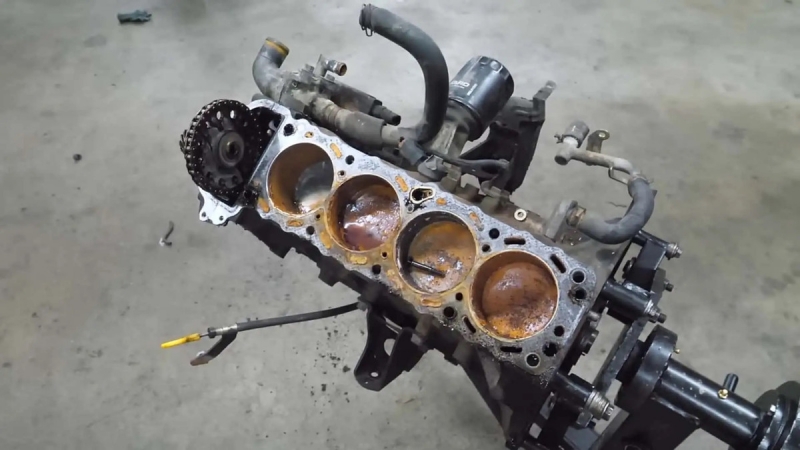
This engine was once installed in a 1995 Nissan 240SX sports car. It's the KA24DE, a dual overhead cam version of the 2.4-liter four-cylinder engine.
It's been used in many Nissan models over the decades, from the 240 to the Frontier. This engine has driven 230,000 miles and could have driven even more if it hadn't been neglected, writes Motor1.
That's the conclusion of a recent video on the I Do Cars YouTube channel. It was a difficult project – according to host Eric, it took several days and a lot of effort to create this video. The engine was taken from a wrecked 240SX, although how the car crashed remains a mystery. Evidence indicates that the engine failed prior to the accident, not as a result of the collision. But it doesn't matter. This engine really died.
What happened is not a big secret. From the start, there are signs of water getting into places it shouldn't. A disgusting orange coating and mineral deposits appear on the spark plugs. When you dig down to remove the intake manifold, even more rust and deposits appear on the coolant hoses. And when the head is removed, everything becomes painfully obvious. Normal tap water was run through the cooling system of this engine, and not as a stopgap measure to bring a wounded car home.
200% Deposit Bonus up to €3,000 180% First Deposit Bonus up to $20,000This is what a waterlogged engine looks like: watch the video
As a result, the minerals found in the water eventually reacted with the iron and aluminum in the engine,which resulted in the formation of an orange rusty deposit that could be found all over its interior. Sludge eventually clogged the cooling passages, which led to overheating and eventually to the failure of the cylinder head gasket. Do you see water in the cylinders? This is not the result of the engine being left outside without weather protection. The milky sludge in the oil pan confirms again that this KA had a failed head gasket that caused water and oil to mix.
Had the proper coolant been used, this probably wouldn't have happened. Also, if the engine had been repaired after the gasket had blown, it could have been salvaged. Instead, even the blades of the cams were covered with rust from the moisture that got to the mill. The crankshaft is rusty, the head is rusty, and the pistons literally had to be hammered to get them out of the block.
Putting water in the radiator can certainly help cool the engine in a pinch, but you shouldn't keep it there for long. Engine coolant doesn't just exist to prevent freezing or boiling.

